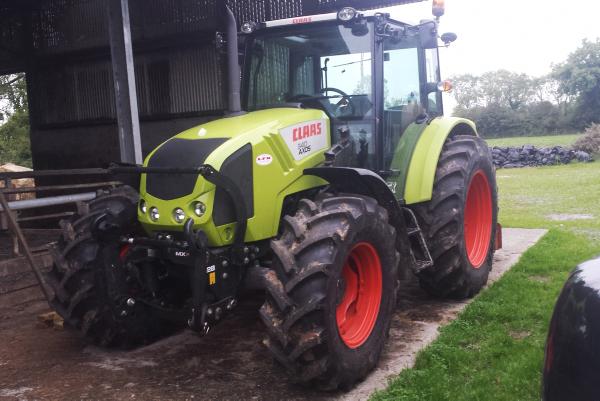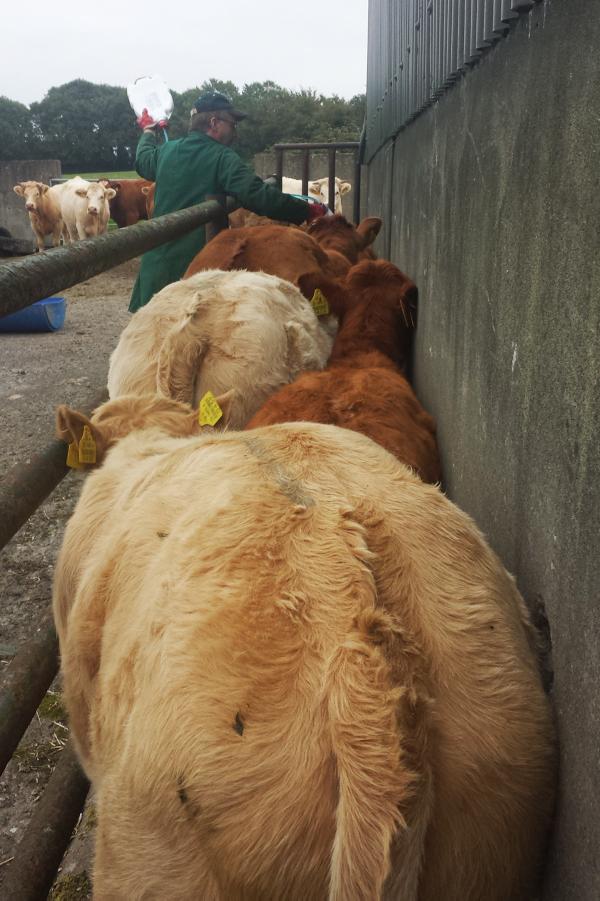The week gone by will be long remembered here, for hopefully all the right reasons. Big changes are afoot on the farm.
After forty years in the red we finally got out. Our two-wheel drive Massey Ferguson 4255 topped her last paddock and a shiny new ClAAS Axos 340 thundered up the farm lane. She boasts 102 horses and comes complete with a release loader and front linkage.
I must say, she’s a beaut. The cab is the lap of luxury and it’s a welcome change when air conditioning doesn’t involve leaving the doors open. One thing I’m finding hard to adjust to is the shuttle gearbox.
Our old machine was completely manual and I’m used to dancing on the clutch when working round the yard. The inevitable wider turning circle that comes with the 4x4 is also difficult to come to terms with.
So much so that I nearly shed a mudguard in the process of filling a shed with straw bales yesterday evening. But I’m sure I’ll learn. First world problems eh?
The new machine is a joy to work in and it doesn’t take a crystal ball to predict that there’ll be plenty of topping done in the summer of 2015.
Plate meter
The rattle of a plate meter was audible too this week as we started measuring grass on a 29 acre block of land that has been paddocked off in prep for the main body of our breeding sucklers next year. It previously carried our replacements, as well as producing most of our silage.
One thing I’ve learned through the PhD is just how much potential there is in a well maintained grazing sward. Though the results aren’t necessarily as instantaneous as they would be in a dairy system, I cannot preach enough of the value of a leafy perennial ryegrass crop.
I walked the field with a plate meter last Thursday and drew the new boundaries onto an aerial photo I’d taken from the internet. The field areas are available on the ordnance survey site and you can easily transpose one onto the other.
Then construct a grass wedge in Microsoft excel once you know your desired rotation length and residuals, demand and stocking rate. It’s quite simple to do this on a small scale (less than 50 acres I’d imagine) and will save you a hefty bill when you could do just as good a job as a consultant.
The bottom of the block has been predominantly used for silage and has never had any hardship in terms of tight grazing or poaching. As a result there is still a phenomenal amount of clover in the sward, even though it’s four years old.
Bloat-watch is in full swing for the animals currently grazing. The master plan has hit a snag already though. On Monday evening I sent my brother to do a cover of the block and he returned with figures that suggested daily growth in excess of 100kg DM/ha. I’m not sure if our grassland management capabilities have hit that level just yet.
It shows the importance of consistency when taking any measurements and I should’ve known better, especially since it’s something that has been drilled into me throughout my research. We hope to begin the final rotation around these paddocks in a month and have it closed up my mid-November.
We’re well in surplus judging by last week’s cover but must resist the urge to move the animals on early.
Dosing
The final task in the week was to dose some of the bull calves for worms. This passed without much drama and it’s great to see the animals doing so well.
There are quite a few powerhouses in the group this year that might leave the buyer scratching his head come the spring. I can already envisage talk of penalties for overweight 16 month carcasses. Here’s hoping they’re kind with their limits, just as I’m sure they will be with their prices.






 This is a subscriber-only article
This is a subscriber-only article









SHARING OPTIONS: